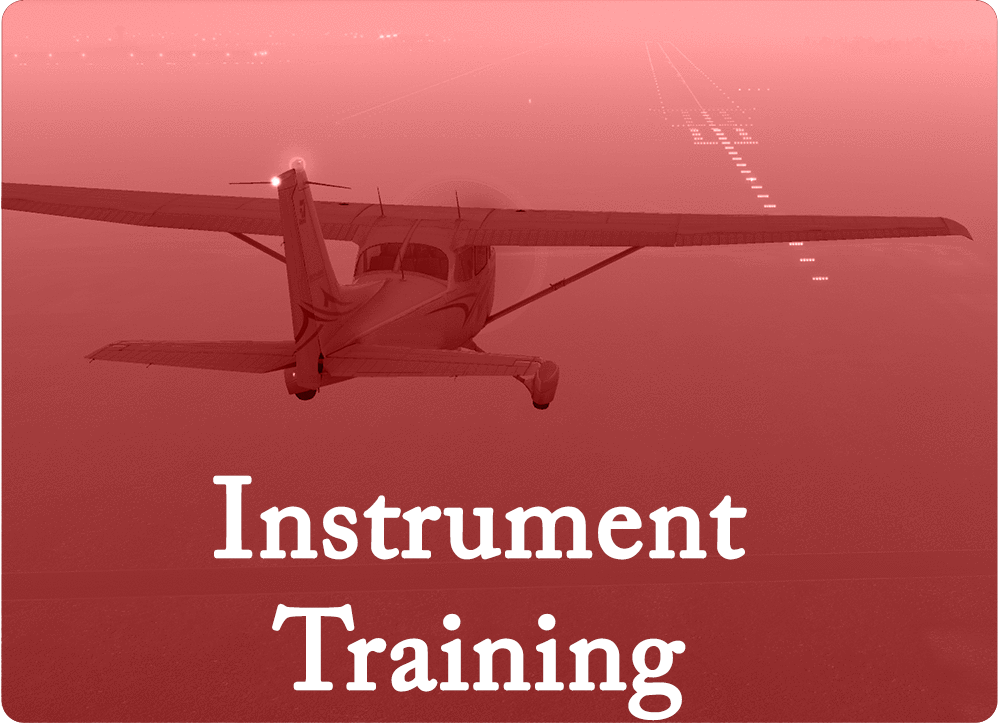Want to fly through clouds and in weather less than VFR: an instrument training course is what you need. Getting an instrument rating is one of the most rewarding experiences you can have as a pilot. How often do you get to learn a brand new skills you can learn as an adult. It requires a whole new resource management discipline and a deep understanding of the Air Traffic Control system.
Requirements
FAR 61.65 lays out the requirements for an instrument rating. You can review the details.
You can get your instrument rating concurrently with your private pilot certificate, but it is usually more logical to get the private pilot certificate, get some experience, and then start instrument training. How much experience?
The key requirement is that, by the time you go to the instrument check ride, you have 50 hours cross country Pilot in Command experience. You will get at least 4-5 of these hours during instrument training, and if necessary this can sometimes be increased to 10 or perhaps even more. And you can add your own PIC cross country flights concurrently with your instrument training. So, if you have 30-40 hours of Pilot in Command, you are good to go.
As a reminder: what counts as Pilot in Command experience:
- All of your solo cross-country time before you earned your private pilot certificate.
- After your private check ride, all cross-country time you flew in a single engine land airplane if you were the one manipulating the controls.
Pop quiz: does your high performance check-out flight count when you didn’t have the high performance endorsement yet? Strangely, Yes! Even though FAR 61.31(f) states that you can’t act as a PIC of a high performance airplane until your flight instructor endorses you, FAR 61.51(e)(1)(i) states that you may log PIC time when you are the sole manipulator of the controls of an airplane in which you are rated. And your ASEL rating does include high performance and complex single engine land airplanes.
Our Unique Approach
Our approach to Instrument Training provides the rigor and structure, needed to learn the right instrument flying skills in the right order. It also recognizes that not everyone learns the same way.
Based on an initial discussion in which we will brief you on the details of what will be covered during the curriculum, we will work with you to determine the following variables:
- The best approach for you to prepare for the FAA knowledge exam. There are many great solutions available, and not all solutions fit all people. Based on our discussion, we will help you choose between taking an online course, a ground school class, guided self study, or one on one learning with your flight or ground instructor.
- How we will use simulators and aviation training devices. We believe these devices can be great training and learning devices, especially for instrument training. The FAA requires a minimum of 40 hours of simulated or actual instrument flight as aeronautical experience for an instrument rating, and some of those experience hours may be received in a FAA approved aviation or flight training device. We encourage the use of home flight simulators to practice between flights, and as part of a currency plan after you get your instrument rating.
- The pace of training: instrument training can be performed anywhere from a compressed course in 10 days to a couple of flights each week. Obviously, one size does not fit all here, so we will work with you to get your best approach.
- The airplane (or airplanes) to be used for your instrument training. Interestingly, for the FAA practical exam, you only need to be able to operate instruments installed in the airplane you bring, and the operations you will perform during the FAA practical exam will be limited to what your airplane can do. For instance, if you airplane doesn’t have a IFR certified GPS, you will not need to do any GPS approaches. But not learning those would greatly limit the utility of your rating at this moment, as the national airspace is slowly transforming into a GPS-based system.
Based on these and other criteria, we will make a plan that will be best for you to get you your instrument rating as efficiently as possible.
Let’s Make a Plan
Your instrument rating will make your pilot license a lot more useful, especially if you want to make longer trips. Ready to find out if you should start instrument training? Contact us, and we will work with you to make a plan.
